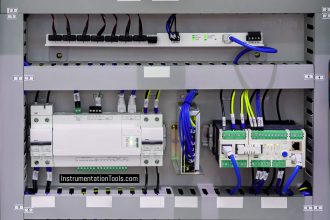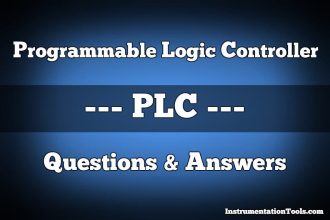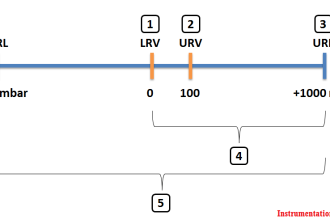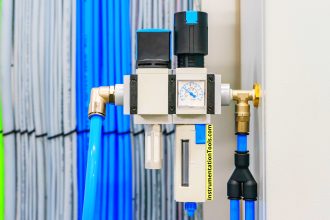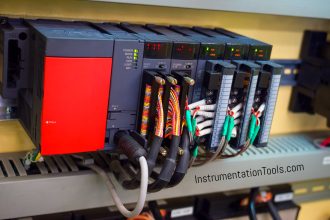1. Explain what is an operational amplifier?
An operational amplifier, abbreviated as op-amp, is basically a multi-stage, very high gain, direct-coupled, negative feedback amplifier that uses voltage shunt feedback to provide a stabilized voltage gain.
2. State assumptions made for analyzing ideal op-amp.
Assumptions made for analyzing ideal op-amp are :
- Infinite open-loop gain
- Infinite input impedance
- Zero output impedance
- Perfect balance
- Infinite frqeuency bandwidth
- Infinite slew rate
- Infinite common-mode rejection ratio
- Nil drift of characteristics with temperature
3. Explain what is a voltage transfer curve of an op-amp?
The curve drawn between output voltage and input differential voltage, for an op-amp, keeping voltage gain A constant is known as voltage transfer curve.
4. Explain what are differential gain and common-mode gain of a differential amplifier?
When the difference of the two inputs applied to the two terminals of a differential amplifier is amplified, the resultant gain is termed as differential gain. But when the two input terminals are connected to the same input source then the gain established by the differential amplifier is called the common mode gain.
5. Define CMRR.
CMRR is defined as the ration of differential voltage gain to common-mode voltage gain and it is given as CMRR = Ad/Acm
6. Explain why does an op-amp have high CMRR?
High CMRR ensures that the common mode signals such as noise are rejected successfully and the output voltage is proportional only to the differential input voltage.
7. Explain why open-loop op-amp configurations are not used in linear applications?
When an op-amp is operated in the open-loop configuration, the output either goes to positive saturation or negative saturation levels or switches between positive and negative saturation levels and thus clips the output above these levels. So open-loop op-amp configurations are not used in linear applications.
8. List the parameters that should be considered for ac and dc applications.
The parameters to be considered for dc applications are:
- Input offset voltage
- Input offset current
- Input bias current
- Drift
The parameters to be considered for ac applications are:
- Gain bandwidth product (GBW)
- Rise time
- Slew rate
- Full-power response
- AC noise
9. Define offset voltage as applied to an op-amp.
Input offset voltage may be defined as that voltage which is to be applied between the input terminals to balance the amplifier.
10. Give the typical value of bias current for CA741 operational amplifier.
80nA
11. Define slew rate.
Slew rate of an op-amp is defined as the maximum rate of change of output voltage per unit time and is expresses in V/µs.
12. Explain what kind of negative feedback is present in a noninverting op-amp.
Negative voltage-series feedback.
13. Explain what is a voltage follower?
Voltage follower is an electronic circuit in which output voltage tracts the input voltage both in sign and magnitude.
14. Explain what are the advantages of using a voltage follower amplifier?
Voltage follower has three unique characteristics viz. extremely high input impedance, extremely low output impedance and unity transmission gain and is , therefore, an ideal circuit device for use as a buffer amplifier.
15. In Explain what way is the voltage follower a special case of the non-inverting amplifier?
If feedback resistor is made zero or R1 is made ∞(by keeping it open-circuited) in a noninverting amplifier circuit, voltage follower is obtained.
16. Explain what is an inverting amplifier?
In an inverting amplifier, the input is connected to the minus or inverting terminal of op-amp.
17. Explain what are the applications of an inverting amplifier?
Inverting amplifier is a very versatile component and can be used for performing number of mathematical stimulation such as analog inverter, paraphrase amplifier, phase shifter, adder, integrator, differentiator.
18. Explain what is a differential amplifier?
Differential amplifier is a combination of inverting and noninverting amplifiers and amplifies the voltage difference between input lines neither of which is grounded.
19. Give examples of linear circuits.
Adder, subtractor, differentiator, integrator fall under the category of linear circuits.
20. Explain what is an adder or summing amplifier?
Adder or summing amplifier is a circuit that provides an output voltage proportional to or equal to the algebraic sum of two or more input voltages multiplied by a constant gain factor.
21. Explain what is an integrator?
An integrator is a circuit that performs a mathematical operation called integration.
22. Explain what are the applications of integrators?
Integrators are widely used in ramp or sweep generators, filters, analog computers etc.
23. Op-amp is used mostly as an integrator than a differentiator. Explain why?
Op-amp is used mostly as an integrator than a differentiator because in differentiator at high frequency, gain is high and so high-frequency noise is also amplified which absolutely abstract the differentiated signal.



